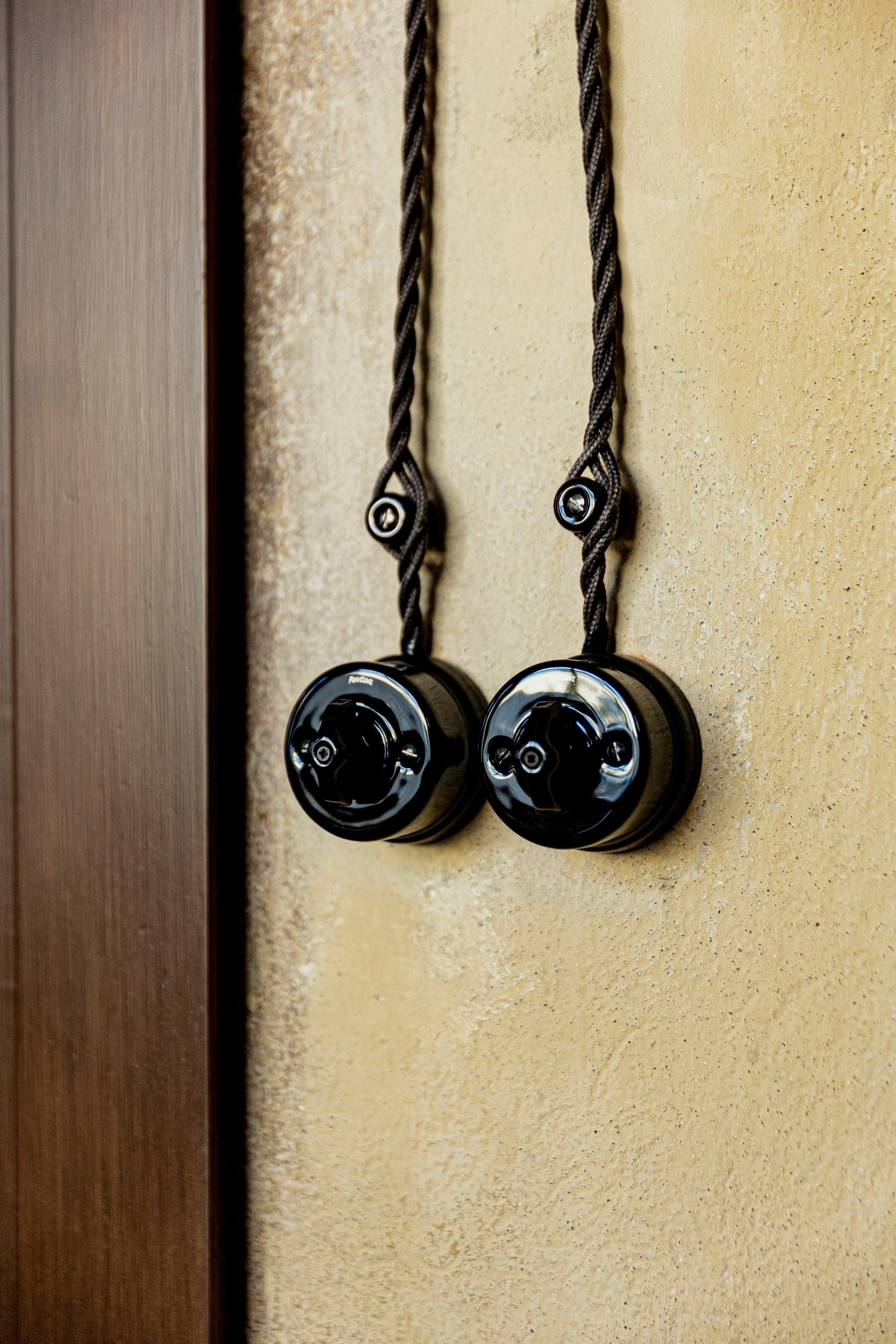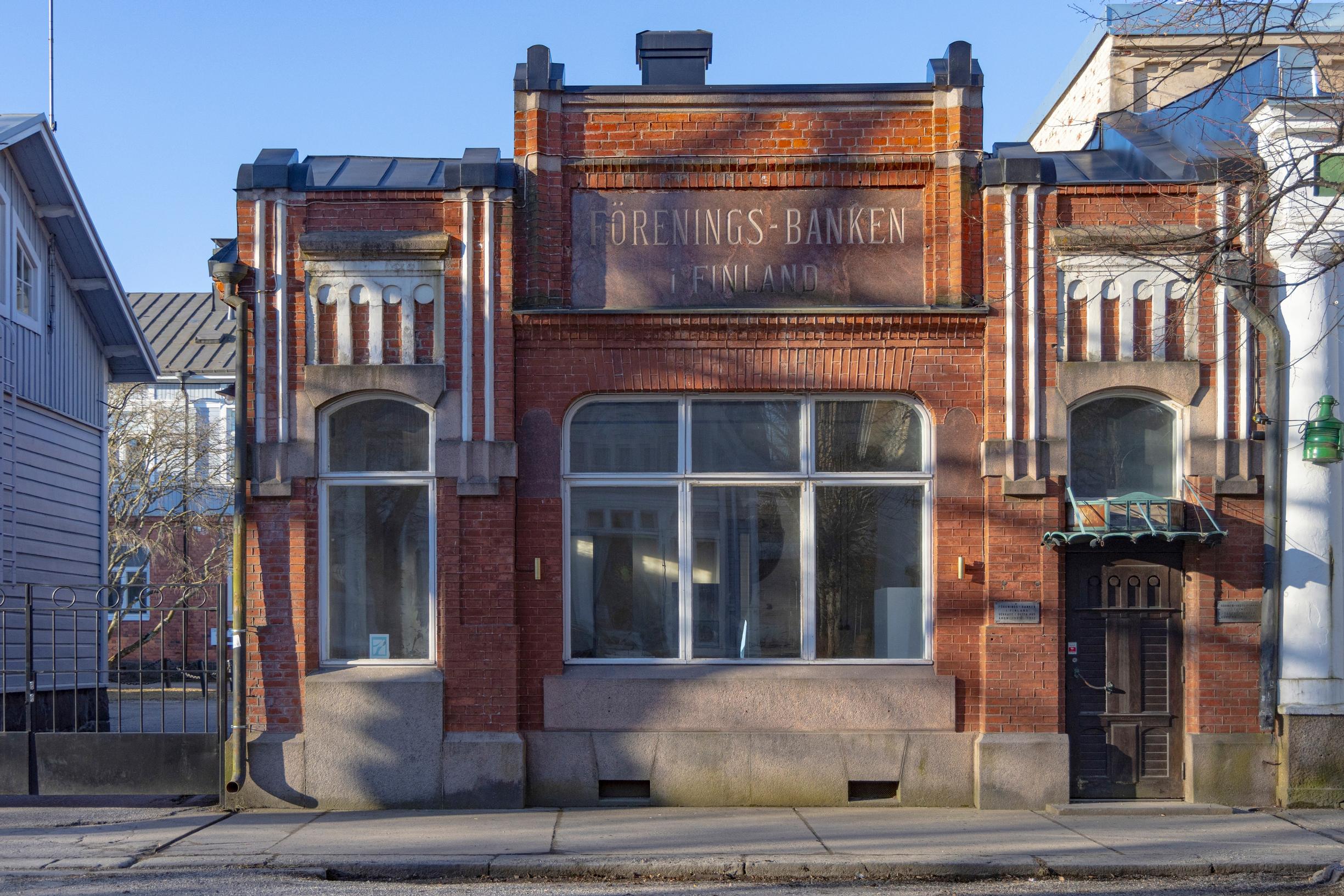
Anna and Tomi renovated an old bank on a tight budget: “Recycling is not only an ecological choice but also a practical necessity”
Anna Piiroinen and Tomi Parkkonen did a cultural service and renovated an old commercial property in Hanko into a multi-function space. Their design approach is bringing the past and present together.
Anna Piiroinen and Tomi Parkkonen moved to Hanko, Finland, with their children about twenty years ago, into an old tinsmith’s workshop on Bulevardi. Whenever they walked on the street, they would stop to admire a Jugend and Neo-Renaissance–style building, originally built in 1903 as a branch of the Union Bank of Finland.
Back in the day, countless emigrants passing through the Hanko port handled their bills of exchange and other financial matters there. Over the years, the building served many purposes and had clearly fallen into neglect. Anna affectionately called it a rickety old brick building.
“The building used to house a pizzeria, and we realized how much untapped potential there was in the 138-square-meter space divided into two halls. You just had to see beyond the red-and-white paint layers, scenic wallpaper, plastic flooring, and Coca-Cola stickers covering the windows,” Anna says.
After a number of twists and turns, in the middle of the COVID-19 pandemic, the couple bought the building, and even they were a bit astonished by what they had gotten themselves into.

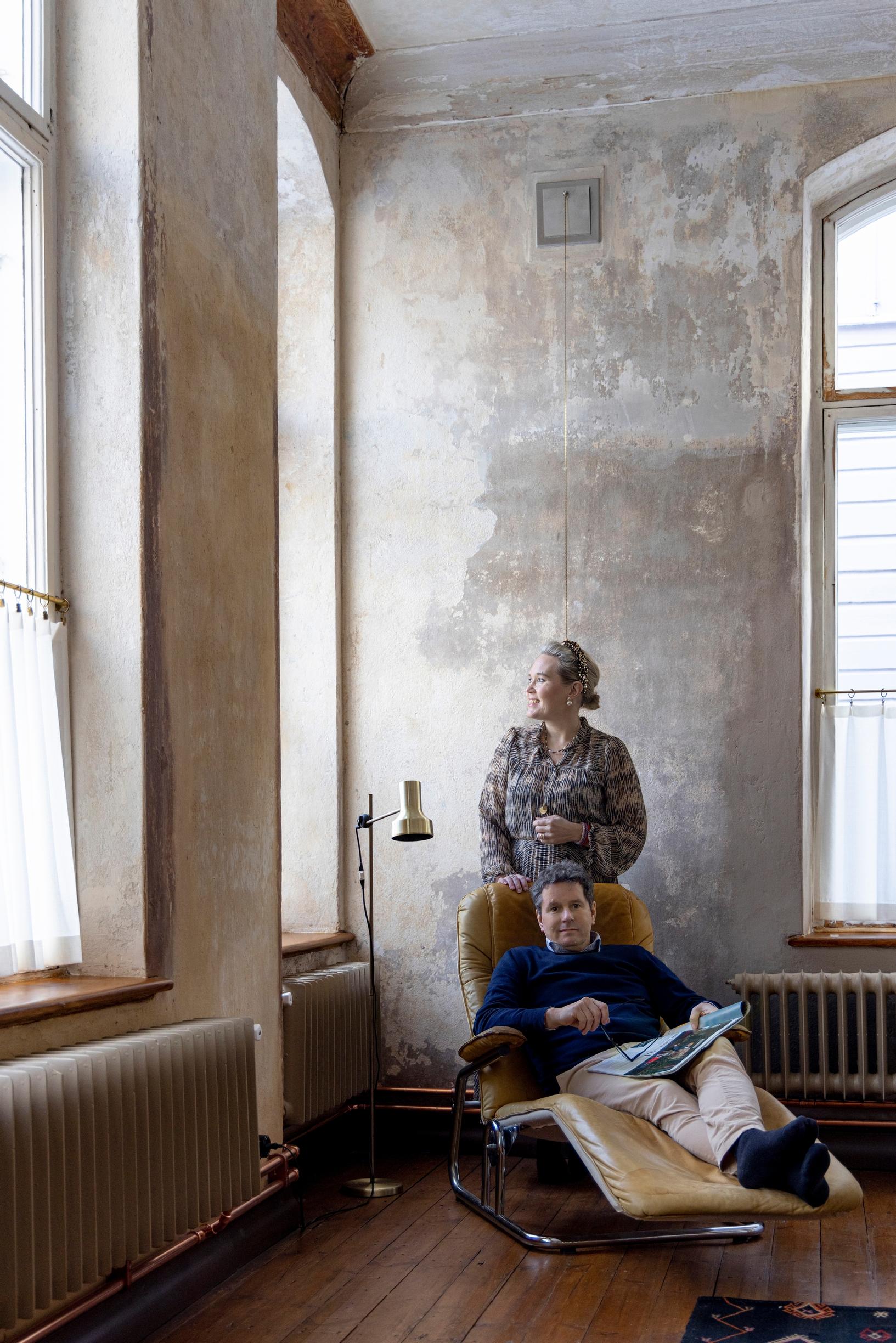

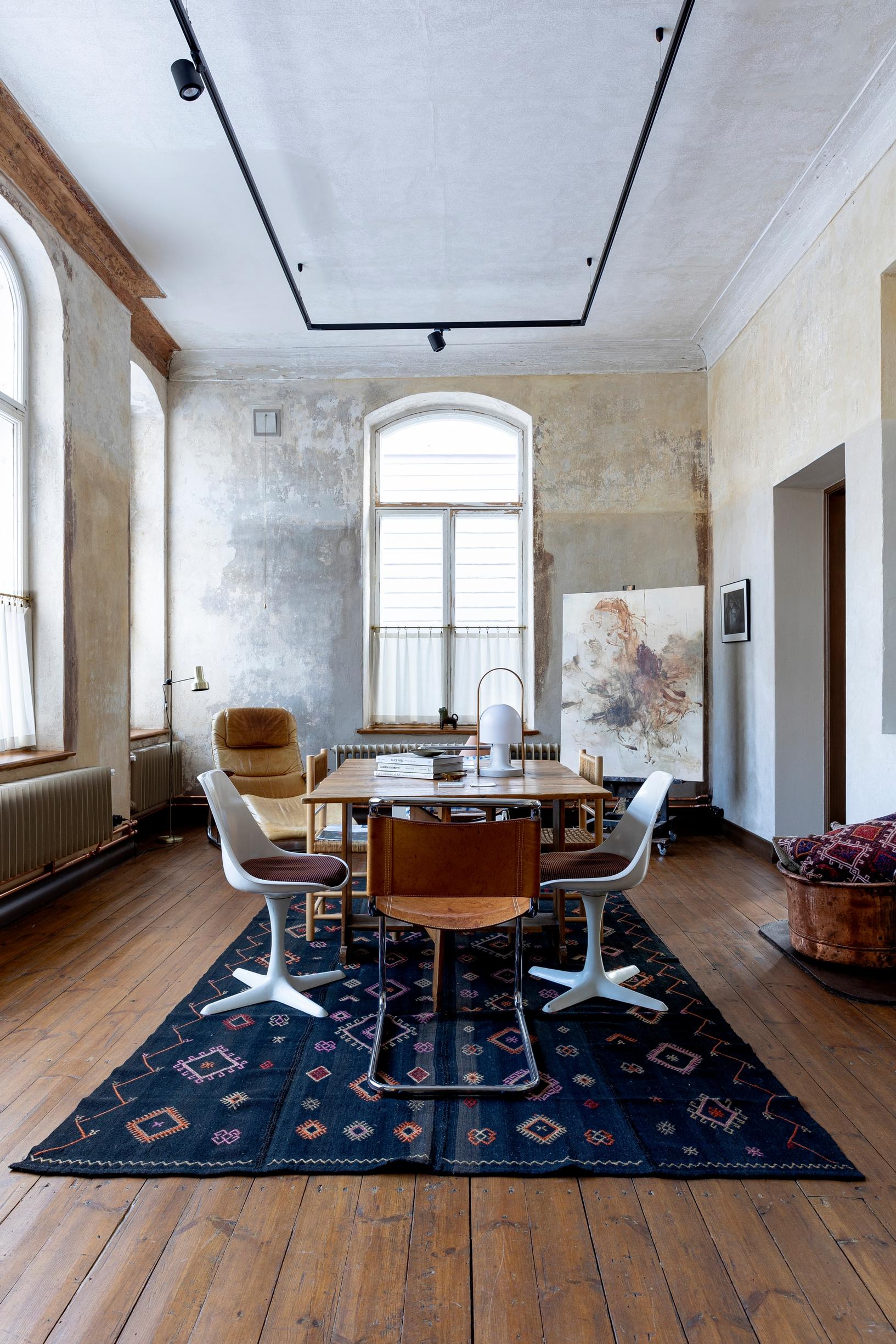
On a small budget
Anna Piiroinen is a freelance writer, and Tomi Parkkonen is a photographer. The couple had already thoroughly renovated their home and guesthouse, but both were uncertain about the scope of this new project.
“Fortunately, we had no clue how extensive a project we were getting into,” Anna says now with a chuckle.

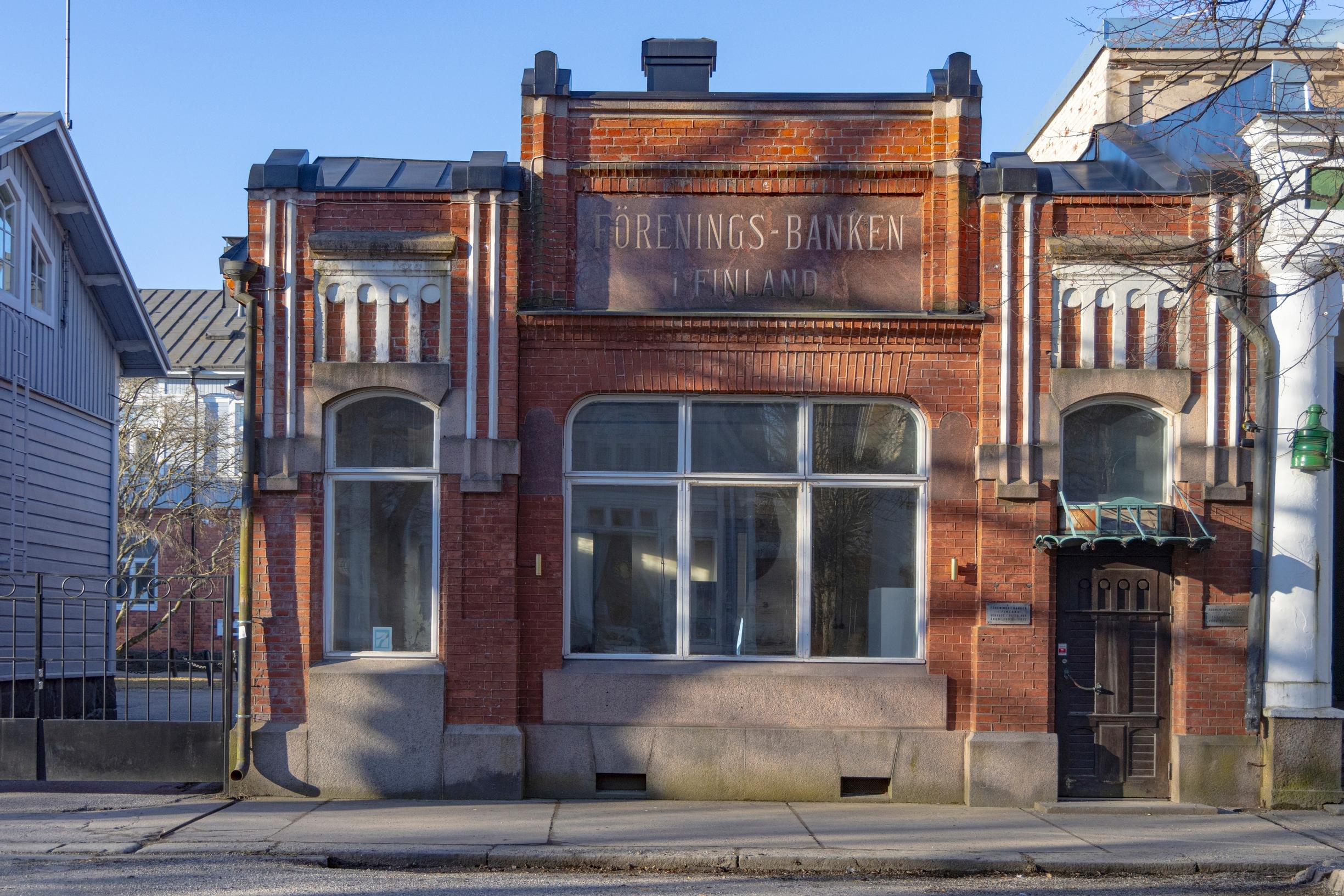


“You just had to see beyond the plastic flooring and Coca-Cola stickers covering the windows.”

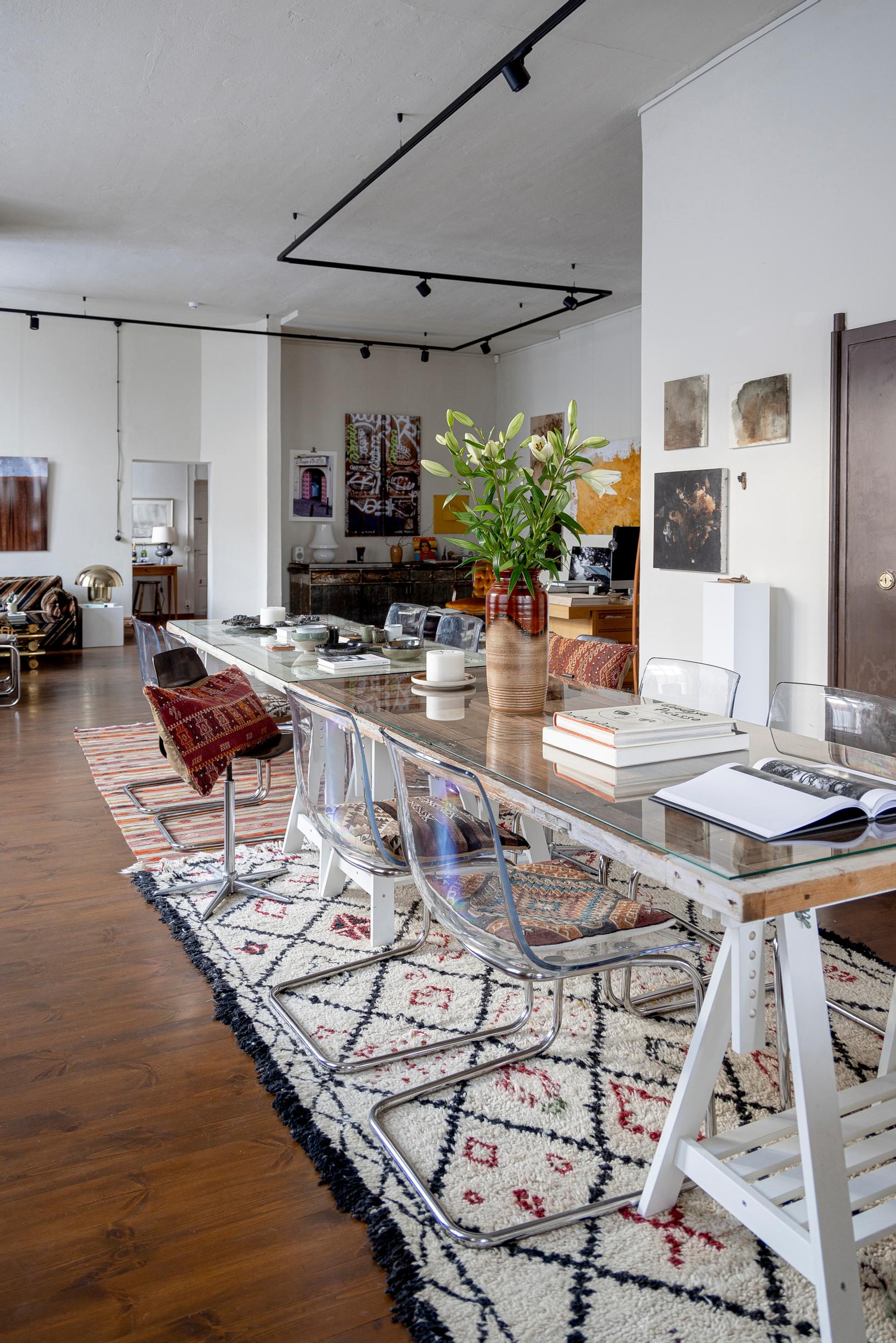
Even with many previous owners, plenty of original features were intact: the wooden and glass vestibule at the entrance, wooden windowsills, the smaller hall’s floor, and the crown moldings. During renovations, they also found a piece of the original baseboard, which they had replicated by a local Hanko craftsman. The stone-and-railway-track vault and its key had also survived.
“Sadly, we didn’t come across any hidden money,” Anna jokes, noting that their renovation budget was limited.
“We did whatever we could ourselves, but naturally we hired professionals too. A big part was played by Maamusta, a company which specializes in defining color palettes for heritage buildings. Their expert Anni Rantasalo deserves our heartfelt thanks. Her know-how was worth its weight in gold.”
“People would drop by all the time, asking what we were up to.”
Following Anni’s guidance, they scraped off layers of paint to reveal the original, slightly yellowish and sandy-colored paint. Initially, the paint peeled off in big sheets, but progress slowed the deeper they went.
“There were times when I wondered if we should’ve just painted over it,” Anna recalls.
Another time-consuming and frustrating stage was treating the floor in the smaller hall. On Anni’s recommendation, it was sanded by hand instead of a machine. It was a huge job, but now that they see the final result, Anna and Tomi are grateful for Anni’s uncompromising approach.
“We learned so much in each phase of renovation,” Anna says. With a twinkle in her eye, she adds that she and Tomi now discuss things like flax sealing for windows, lath-and-plaster ceilings, and early drywall forms like seasoned pros.
“We’d never even heard of those before starting this project.”

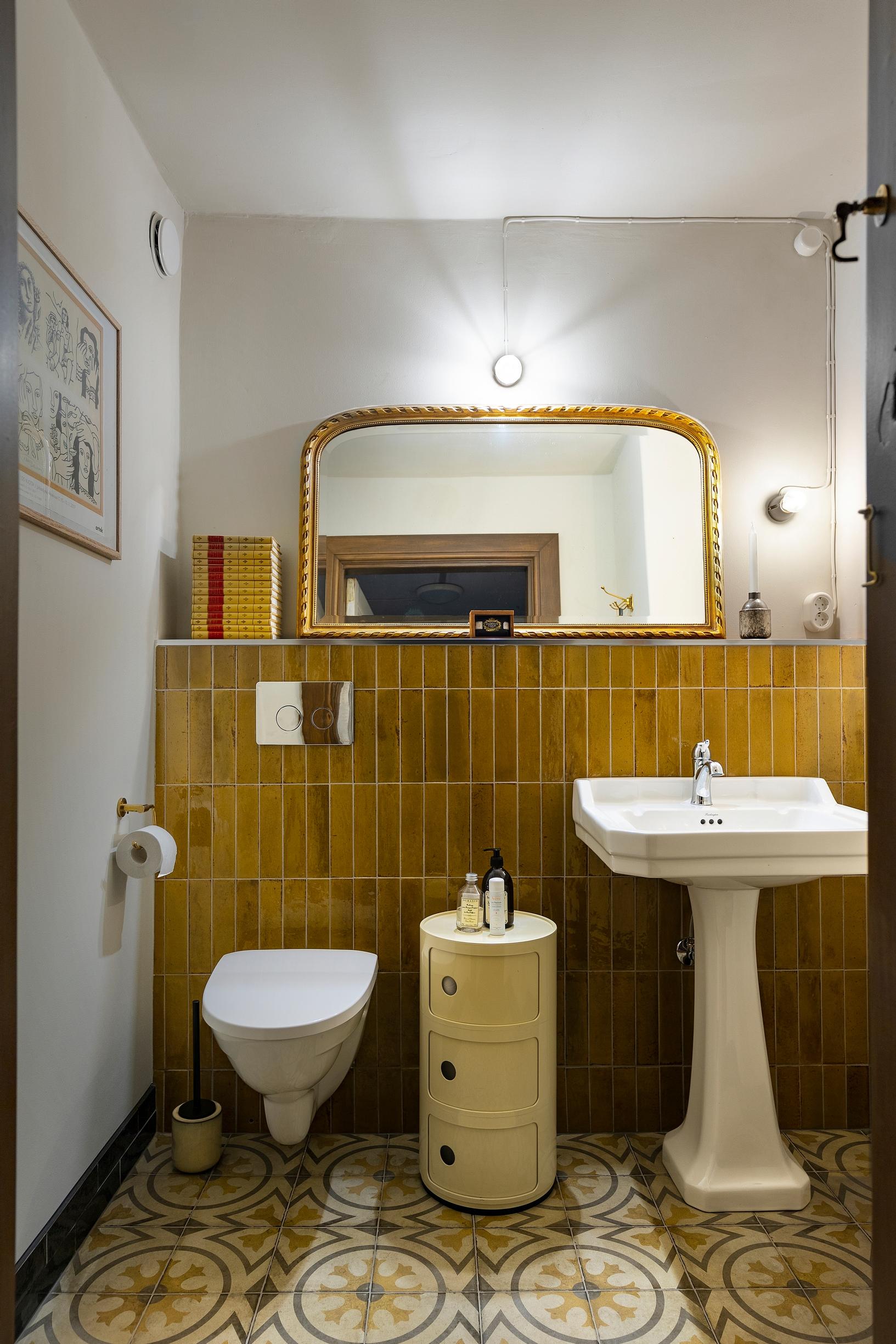

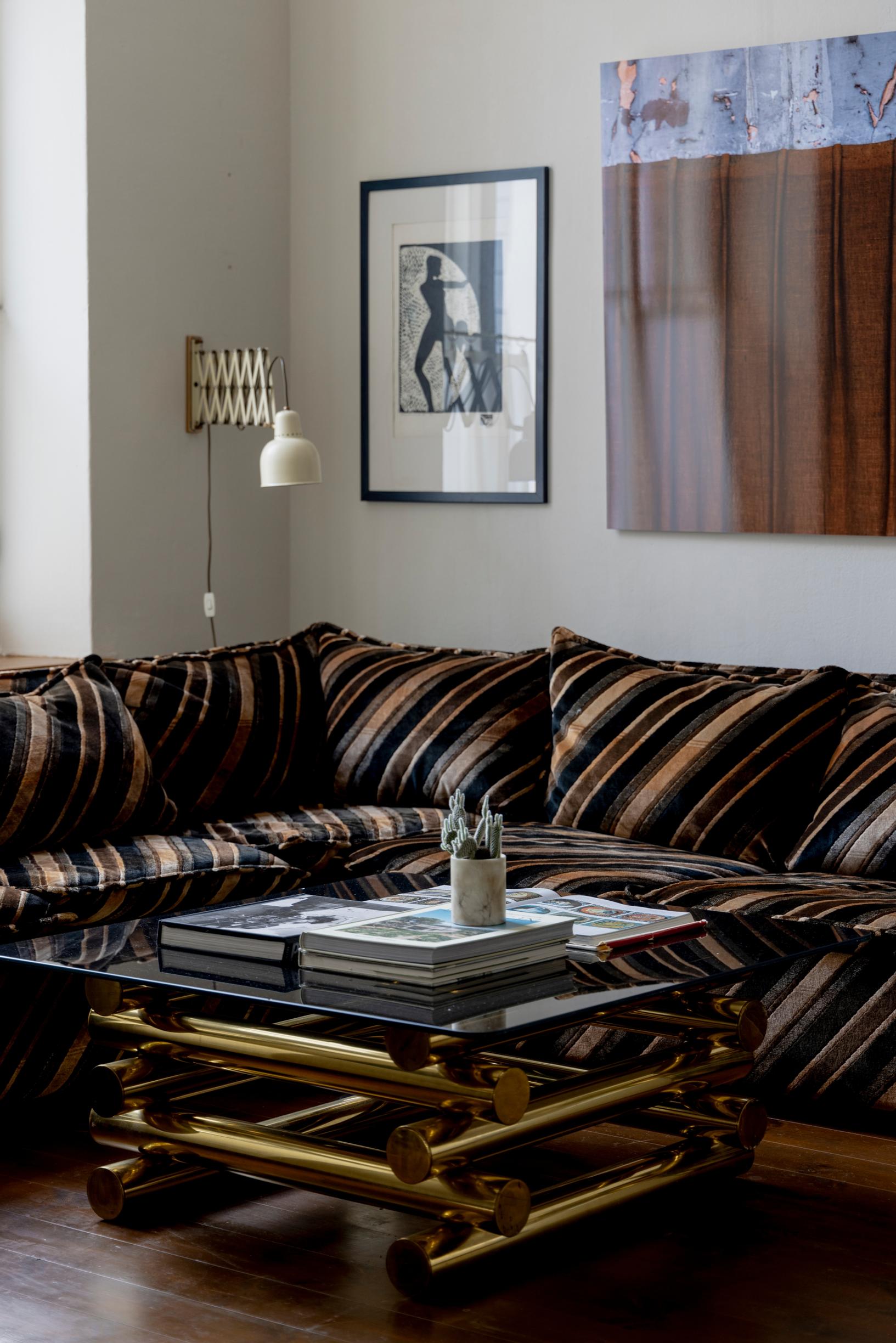
Curious townspeople
The building piqued the curiosity of local Hankonians right from the start. People could follow the progress through Anna’s social media, Tomi’s photos, or simply by peering in the windows.
“People would drop by all the time, asking what we were up to,” Anna says.
It’s no wonder. Anna has a knack for creating beauty around her. Two years ago, during the Christmas season, they hung festive lights and wreaths in the windows, even though the place was still under construction.
“Sometimes we’d carry in a table, cover it with a cloth, and put flowers in a vase. It felt important to celebrate the work in progress and create some beauty amid the chaos. It helped us picture the end result, and we would remind each other that one day we’d be finished.”
Currently, the building—restored to new glory—serves mostly as Anna and Tomi’s workspace.
The project was completed last summer. The original layout stayed intact, and besides the two main halls, they created a small kitchen using reclaimed materials.
“We were wise to explore our options thoroughly and take our time, so we could make flexible decisions as the work progressed. If we’d had a bigger budget, we might have hired more professionals for some of the traditional restoration,” Tomi notes.
“One of the kindest comments we’ve heard is that our project was a cultural service,” Anna says, humbled.
In her opinion, the truth is that without their intervention, the building wouldn’t have survived much longer in its prior state.
“On the other hand, I’m aware of the countless small jobs we still have left to do. But I’ve made peace with the fact that things are slightly off-kilter here, and we can’t afford to make everything perfect all at once. Thankfully, old places don’t have to look brand new.”

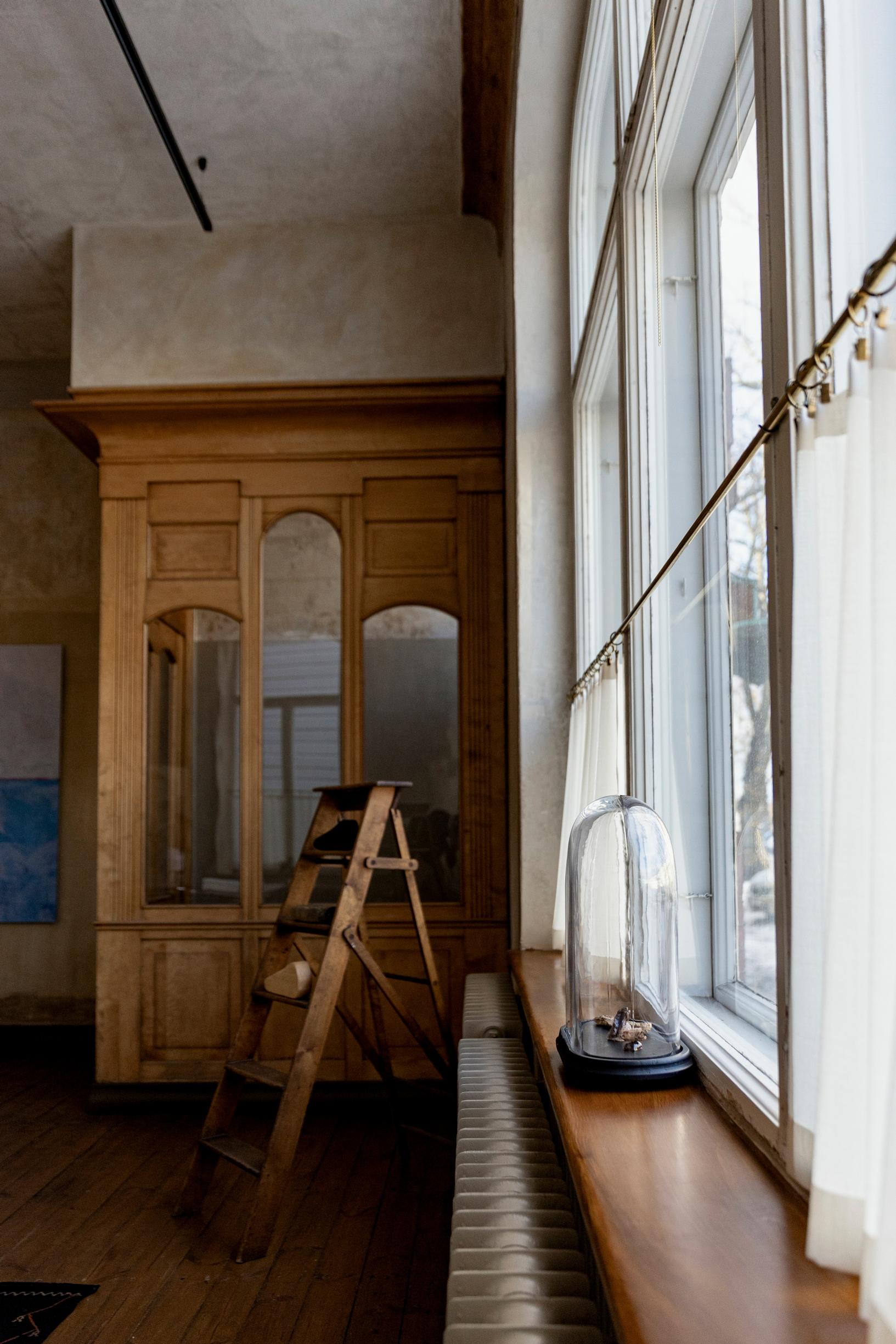

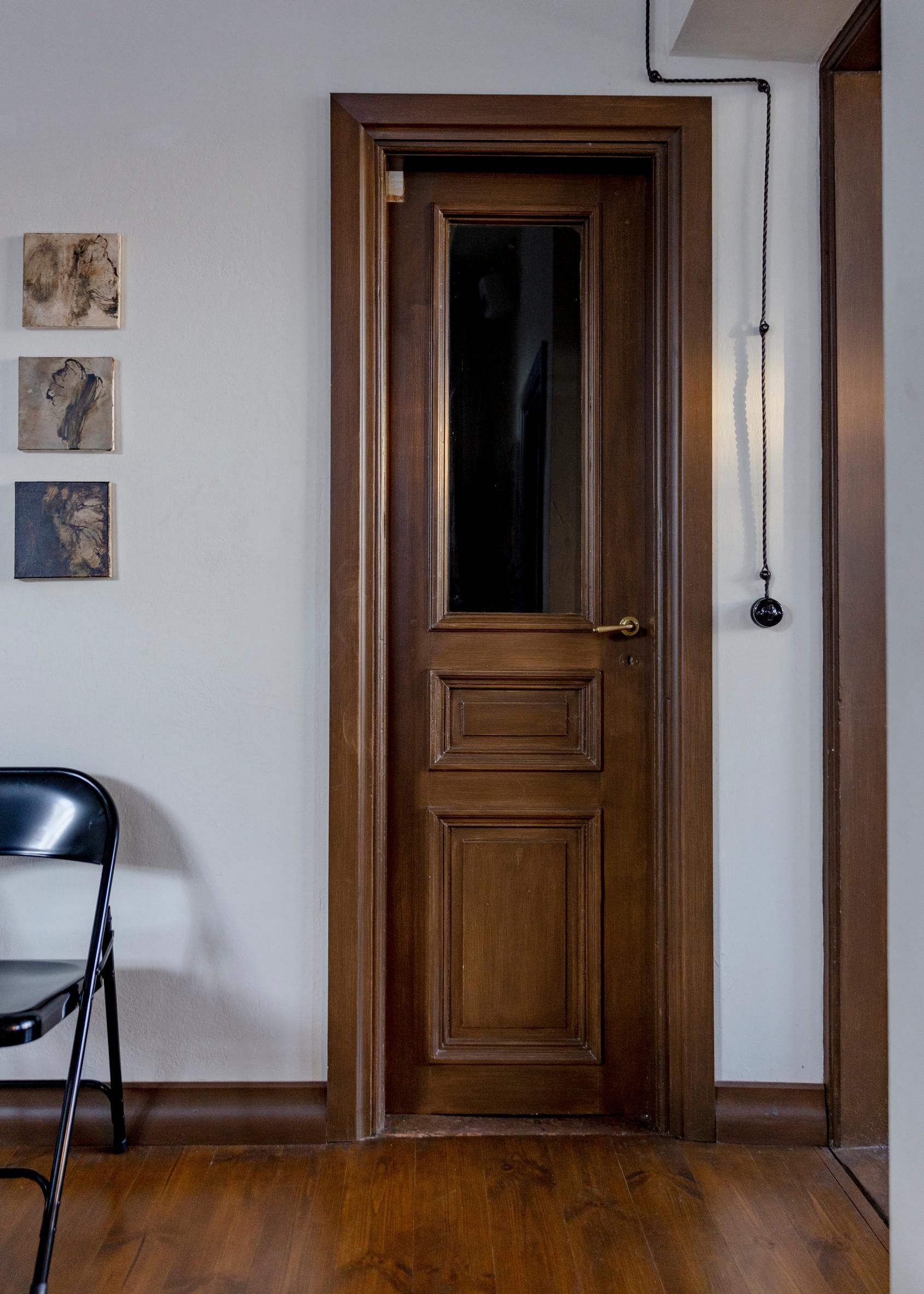
Relaxed and recycled
Both Anna and Tomi have an eye for aesthetics, but Anna takes the lead when it comes to decorating. She has a sharp eye, and her approach is bohemian, vibrant, and abundant. However, she insists she doesn’t follow a strict style.
“I pick out items I like, and when I bring a piece of furniture home, I just put it wherever it fits. We didn’t want a museum here, and I mixed things up with pieces from different eras. The wonderful thing about this space is that everything seems to work.”
Anna mentions a large, dark velvet sofa from the 1970s that her family initially opposed, but it settled in as if it were tailor-made.
“Recycling is not only eco-friendly—it’s also a practical must. With secondhand finds, you can furnish more affordably. We’ve both received and purchased pieces from vintage and secondhand shops. If I’d had an unlimited budget, I might have frozen, not knowing where to start.”

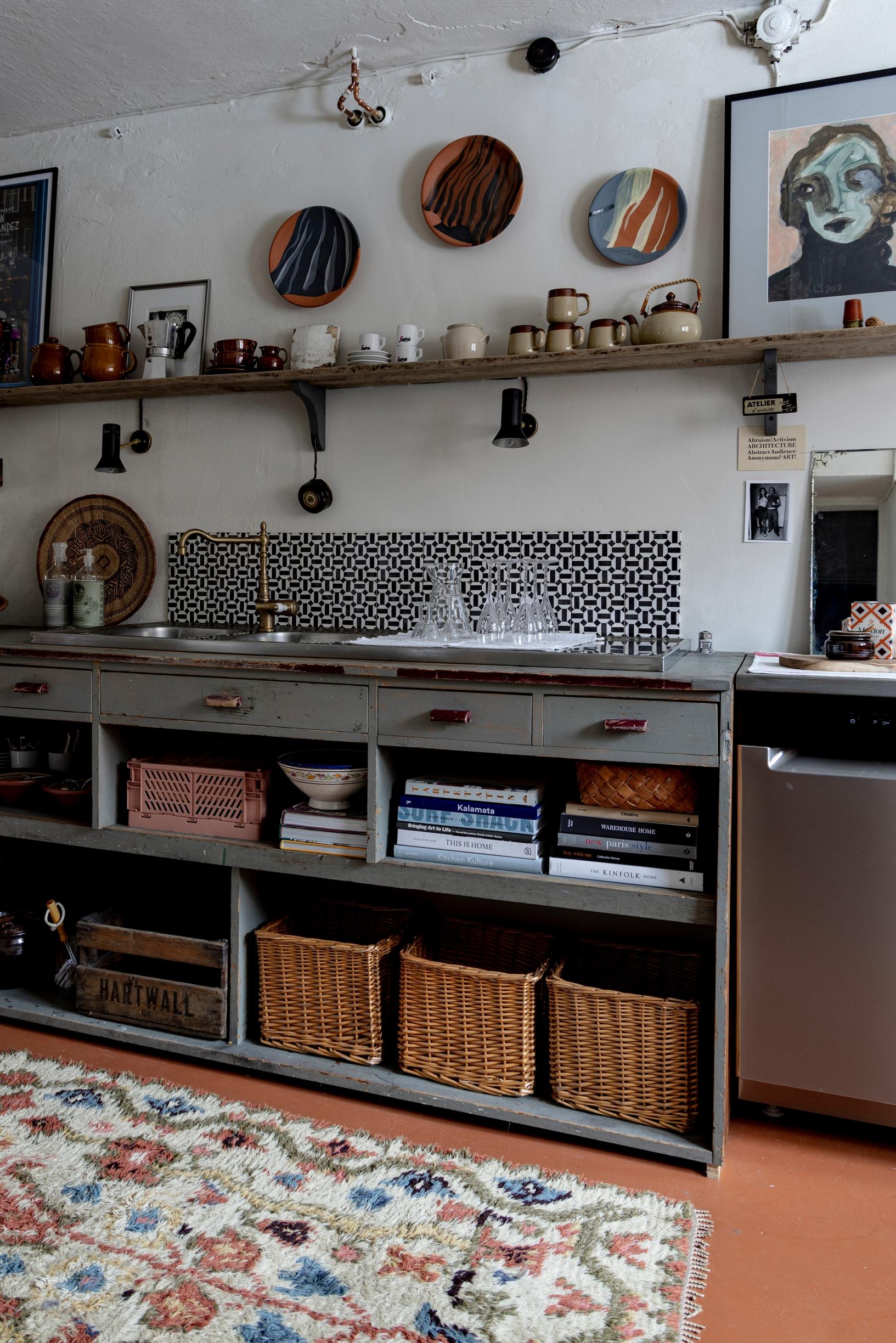
The eye is also drawn to the art on the walls: Tomi’s photographs, pieces they’ve purchased themselves, and works brought in by artist friends for pop-up exhibitions. Anna and Tomi aim to display an even broader array of art in the future.
“At the same time, our own taste expands, and this space can accommodate many different styles. My decorating philosophy is that you need to challenge yourself,” Anna says.
Currently, the building—restored to new glory—serves mostly as Anna and Tomi’s workspace. Since it was completed, they’ve also hosted movie nights, food events, and launch parties. Next up, they’re planning literary evenings and pop-up events.
Their dream of creating a welcoming, creative space for everyone in Hanko—and all who visit—has come true.

